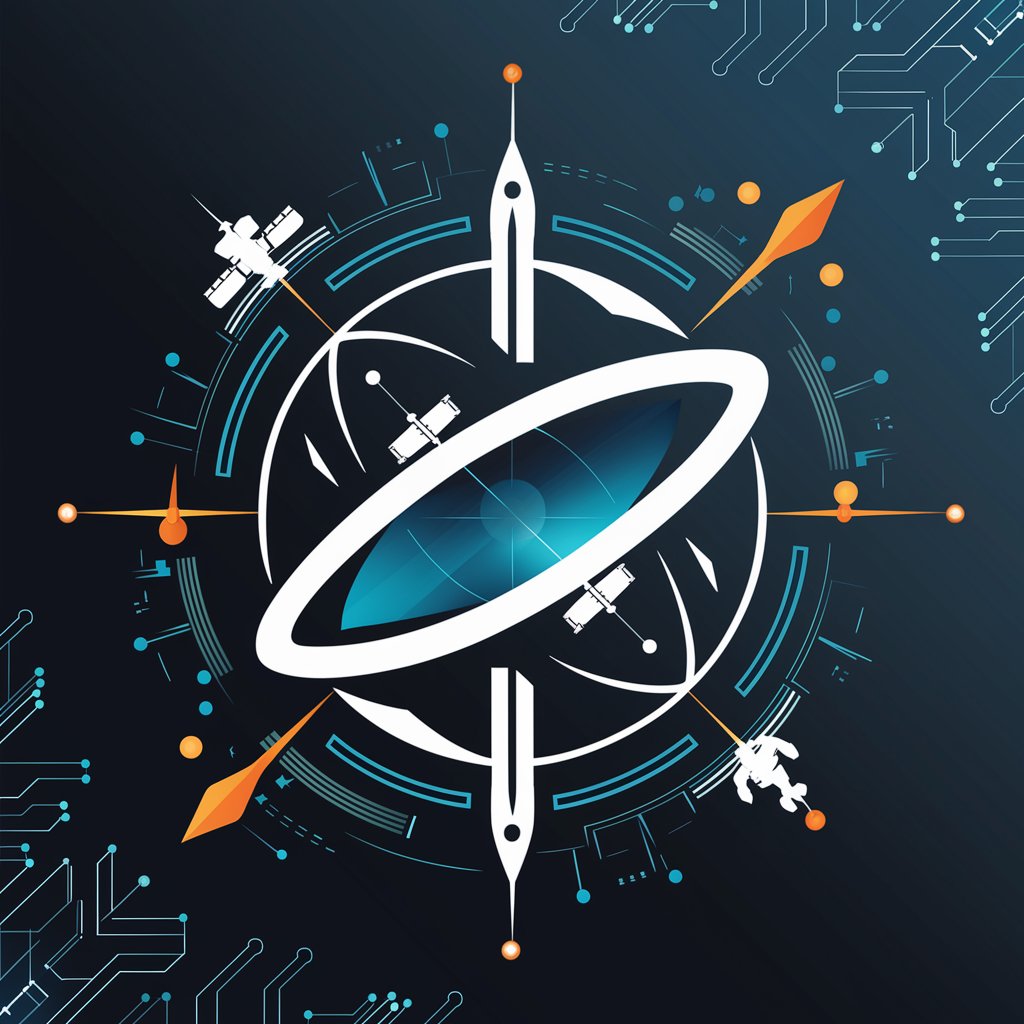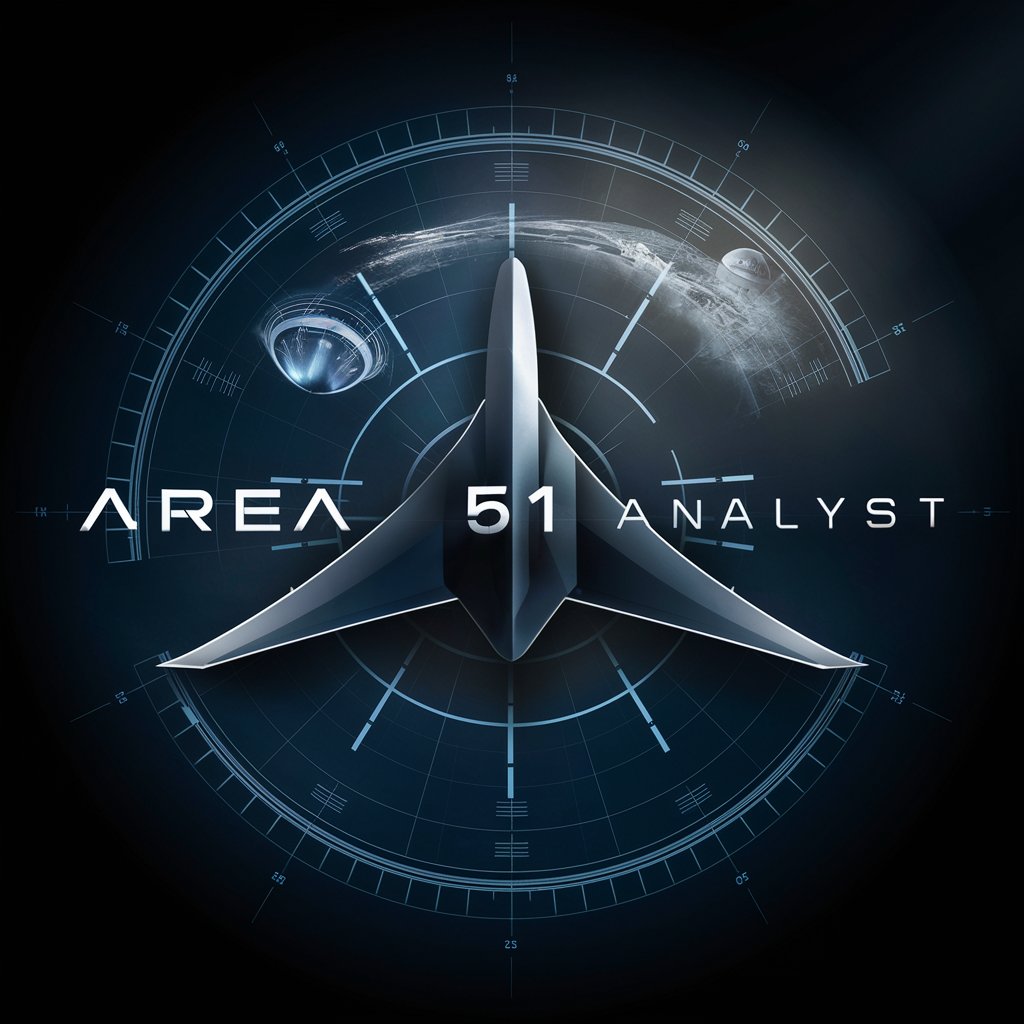
Space Domain Awareness - Space Surveillance Tool

Welcome to Space Domain Awareness insights.
Your Eye in the Sky: AI-Driven Space Monitoring
Explain the challenges and potential solutions in Space Domain Awareness.
Discuss the role of machine learning in improving Space Domain Awareness.
How can integrated communication systems enhance Space Domain Awareness?
What are the key components of an effective Space Domain Awareness framework?
Get Embed Code
Understanding Space Domain Awareness (SDA)
Space Domain Awareness (SDA) is the comprehensive knowledge required to maintain the safety and security of space operations. It involves the detailed observation and understanding of all activities and entities in space, including both human-made and natural elements. As space becomes increasingly congested with satellites, debris, and new actors, SDA's importance escalates. It aims to provide actionable insights to predict, avoid, deter, operate through, recover from, and attribute cause to the loss and/or degradation of space capabilities. For example, monitoring the trajectories of active satellites and space debris to prevent collisions is a critical SDA function. Powered by ChatGPT-4o。

Main Functions of Space Domain Awareness
Orbital Tracking
Example
Tracking all objects in space, including satellites and debris, to ensure safe navigation and avoid collisions.
Scenario
Using radar and optical sensors to maintain a continuously updated catalog of space objects.
Behavior Prediction
Example
Predicting the future positions of space objects based on their current trajectories and potential maneuvers.
Scenario
Analyzing historical data and current trends to forecast potential threats from derelict satellites or debris.
Threat Analysis
Example
Identifying and assessing potential threats, such as adversarial satellites or space weather events, that could impact space operations.
Scenario
Using algorithms to detect unusual patterns or signals from satellites that might indicate hostile intentions or malfunctions.
Ideal Users of Space Domain Awareness Services
Governmental Space Agencies
Agencies such as NASA and the European Space Agency use SDA to manage their satellites, ensure mission success, and contribute to international efforts to track and manage space traffic and debris.
Commercial Satellite Operators
Companies like SpaceX and OneWeb require SDA for the management of their satellite constellations, preventing collisions, and optimizing satellite paths for maximum efficiency and service coverage.
Defense Organizations
Military and defense agencies utilize SDA for national security purposes, including the surveillance of potential adversarial activities and the protection of critical space-based assets.

How to Use Space Domain Awareness
Begin with a Free Trial
Visit yeschat.ai to start a free trial without needing to log in or subscribe to any premium services.
Identify Objectives
Define your specific objectives for using Space Domain Awareness, such as monitoring satellite traffic, tracking space debris, or assessing potential threats to space assets.
Collect Data
Utilize various sources of space surveillance data, including telescopes, radars, and satellite feeds, to gather information about the objects in space relevant to your objectives.
Analyze Data
Apply analytical tools and techniques to process and interpret the collected data. This may involve predictive analytics to foresee potential collisions or disruptions.
Make Informed Decisions
Use the insights gained from data analysis to make informed decisions and take appropriate actions, such as maneuvering satellites to avoid collisions or informing stakeholders of potential risks.
Try other advanced and practical GPTs
Awareness Ally
Insightful Self-Reflection with AI

Cybersecurity Awareness Trainer
Empower Your Cybersecurity With AI

Manual Handling Awareness
AI-driven Manual Handling Guidance

Awareness Coach
Sharpen Your Mind with AI-Powered Training

Artwork Describer GPT
Bringing Art to Words with AI

MagicTG - Awakening Artwork
Crafting Your Imagination with AI

Cognitive Awareness Guide
Explore Deeper, Think Smarter

Security Awareness Specialist
Empower with AI-driven Cybersecurity Education

Social Surge
Amplify Your Social Impact with AI

Professional social media assistant
Elevate Your Social Media Game with AI

Market Maven
Empowering Marketing with AI

Leeling
Empowering Decisions with AI

Space Domain Awareness Q&A
What is Space Domain Awareness?
Space Domain Awareness (SDA) refers to the knowledge and understanding of the space environment around Earth, including the tracking and monitoring of man-made objects like satellites and space debris, as well as natural phenomena affecting space operations.
How does SDA benefit satellite operators?
SDA provides satellite operators with crucial information on the location and trajectory of both active satellites and debris, enabling them to prevent collisions, optimize satellite positioning, and enhance overall operational safety.
Can SDA predict space weather impacts?
Yes, SDA includes monitoring solar activity and space weather events that can affect satellite operations and communications. By predicting these impacts, SDA helps in preparing and mitigating adverse conditions in space.
What technologies are used in SDA?
SDA utilizes a range of technologies including radar and optical sensors, artificial intelligence for data processing, and advanced algorithms for orbit determination and object tracking.
How is SDA evolving with new space ventures?
As commercial space activities expand and new actors enter the space domain, SDA is evolving to include more comprehensive surveillance capabilities, international data sharing, and enhanced analytical models to accommodate the increasing number of space objects.





